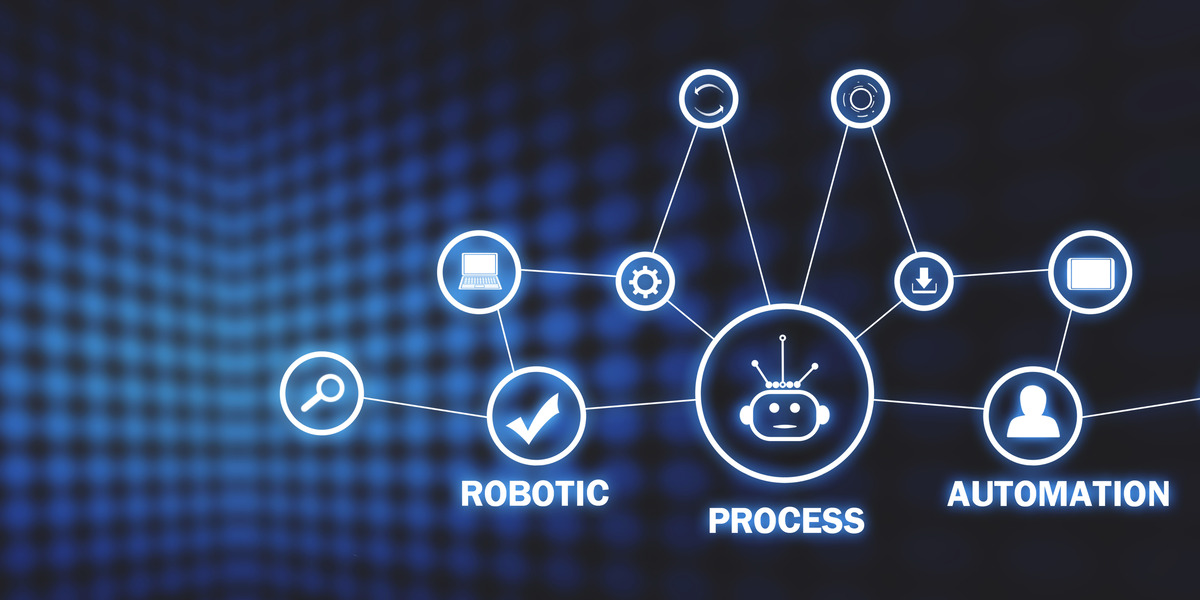Did you know that in the coming years it is estimated that more than 45% of work activities will be automated? Every day new data is generated and managed by technology. For this, it is essential to have software that can be executed virtually and is in charge of automating recurring tasks of any business. This ranges from the collection, transfer of data, administration of files on servers or even the storage of documents, among many others.
by Gustavo Rodriguez, Director of IT Solutions Business Unit at Xtendo Group | BPO
Manual processes accumulate several errors in the optimization of resources and the execution of RPA software increases efficiency and time management, giving employees greater performance in the development of tasks.
In this article you will highlight the RPA process and how to quickly adapt it in your company to obtain a return on investment in a short time. Start reading, meanwhile a robot will bring you coffee.
What is RPA and why is it so important?
In essence, it is a technology capable of configuring a computer software or robot to imitate and execute in an integrated and autonomous -or semi-autonomous- way, actions or sequences of human interaction with certain digital systems, in such a way that it can articulate a commercial project. such as connecting to web applications, copying, pasting, renaming files, performing calculations, parsing emails, starting sessions in programs, connecting to APIs, extracting unstructured data, generating directories and folders, etc.
Many companies have employees who spend a large part of their workday performing routine tasks. In this sense, RPA technology offers your business the possibility of reducing personnel costs and human shortcomings. It is non-invasive and agilely implemented to accelerate digital transformation.
Easily integrated into any work system, it stands as the piece that harmonizes and enhances the work activity of a company and imposes a fast, efficient and guaranteed character. For example, an HR employee with more than 3,000 medical leave certificates, where the processes are mechanically similar, automated the sequence to cover 90% of the cases, reducing the manual process to 5% and consequently obtaining 0 % errors.
Welcome to robotic automation!
Why should I implement RPA?
Think about it! But don’t take too long. The RPA do not think -at least not for now- and the competition when it comes to retaining customers, less. Simply find how to optimize your tasks to get the most revenue possible in a hyper-dynamic market with a selective audience.
Automating repetitive processes improves the economy of the processes and supports the scalability proposed in the goals of your company. Each company aims to replace the repetitive tasks of people, to make the performance of human resources effective. When the volume of activities that can be replaced is high, and this is linked to the size of the company, its robotization should clearly be studied.
In addition to this, it is valid to clarify that RPA is not a private resource for large companies; Small or medium-sized companies also use it to reduce their costs, and if the acquisition of one or more licenses will not compensate, there is the possibility of applying an alternative approach such as renting robots.
The RPA architecture provides companies with two immense advantages that other services fail to provide:
- Reduce personnel costs and avoid errors.
- Increases productivity levels.
The reason is simple: bots are typically low cost, simple to develop and deploy without requiring cumbersome custom software integration systems . This is perfect for any business looking to automate their costs at a relatively low price, yet with solid results.
Starting with RPA in your business automates between 15 to 20 tasks, which allows you to achieve intelligent automation , that is, the automatable practice of any task, from small to large, within a company.
Likewise, this technology is complementary with others such as machine learning, natural language processing and voice recognition to streamline high-order tasks that may require human-like capabilities.
These are some of the reasons why many CEOs, project managers and CIOs choose to implement RPA technology in their businesses; because they streamline their business operations, increase productivity levels, reduce personnel costs, and fundamentally, improve their current businesses.
Benefits of Robotic Process Automation
Do you see your employees repeat the task over and over again? Do these routine actions wear down the team? Start considering robotic systems that bring these benefits:
- Scalability : Regardless of the goals set, RPA technology works effectively. Automation is practical if the seasonal increase in requests causes “bottlenecks” in production.
Solution: Accelerate requests, it will quickly execute the operating process.
- Support with common language languages : Various wizard tools provide code-based solutions for operators. Bots offer voice assistants to increase the accuracy of data recognition.
Solution: This saves money on extra tools used to modify code in text or speech forms.
- Multitasking automation: RPA software will enable you to complete tasks with minimal impact on operational services. The bots keep track of tasks and merchandise orders.
Solution: Data entry will be faster when creating accounts and assigning tasks to subordinates.
- Informative Processing : Usually, data processing takes a long time. The employee must enter information extracted from the database and verify its relevance.
Solution: RPA is used to execute similar tasks much faster, under efficient processing methods and data storage services and other information storage options.
RPA with Artificial Intelligence: a call to Intelligent Automation
More and more companies are turning to RPA to accelerate their digital transformations and streamline business operations, with a view to freeing workers to spend more time on higher-value tasks.
The RPA software will help in a clear and direct way with those redundant and low-value processes for the worker. Consequently, an RPA works well in well-defined processes, with little or no decision making. However, it does not reach certain processes that, to be implemented, require articulating heterogeneous information, just as a human would do.
Intelligent Automation involves the fusion of robotic process automation with Artificial Intelligence -AI- within the same solution.
AI aims to solve the inconveniences, the way of thinking of the human being, of interpreting data and obtaining knowledge. The RPA deals with acting and executing the procedures that we are able to follow after knowing them, and that are systematic. Therefore, while RPA is software that mimics human actions, AI emulates human intelligence.
Combining both technological families in your business model allows you to take a qualitative leap in process automation so that you can execute complex processes more easily.
Imagine, for example, the processing of supplier invoices where you only work with four suppliers that issue you 4 different types of invoices. In this circumstance, you could train your robot so that it learns to extract all the information from the four documents, and process it just as a human would, since there are only four types of invoices.
Notwithstanding this, this process would be very difficult if instead of working with four suppliers, you had more. A larger number of invoices from various vendors will lead to various changes in reading learning and will cause difficulty for your robot.
The AI fantastically solves these problems through natural language processing, and added to the agile identification of the natural reading patterns of this type of document that allows the robot to quickly execute the process on any invoice.
If you are interested in entering the world of robotic automation through RPA and Artificial Intelligence, at Xtendo we can accompany you with all the automation potential, process analysis and environment optimization necessary in your company.
Having a solid, comprehensive and fast track record should be the responsibility of any structure. However, it is also essential to provide a solution to build robots for various platforms, ensure a secure and scalable RPA architecture, and obtain the best practices commanded by our developers.
By making sure you choose a stack solution that incorporates RPA automation and AI, you will take advantage of a technology that brings together various activities such as: reengineering, document management, staff training, surveys, requirements capture, functional design and quality control, to the purposes of integrating technological tools that further expand the ability to virtuously automate. It’s never too late to start!






